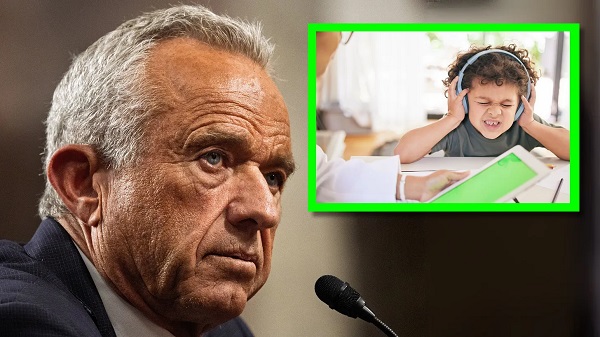Alberta
BUILDING A CAREER ON STRONGER BEER

BUILDING A CAREER ON STRONGER BEER
How Tim Hicks Rose from Clubs to the Big Leagues
By Ilan Cooley
Canadian country star Tim Hicks picked up his first guitar at the age of three, and like the classic Bryan Adams song, he played it ‘til his fingers bled. “I’ll never forget that weekend,” he says. “It hurt to play, but I couldn’t stop.”
Niagara Falls born Hicks wrote his first song in seventh grade, then started performing for schoolgirls at recess. He now has three studio albums, two platinum selling singles, multiple Canadian Country Music Association awards, including 2014 Rising Star, and two Juno nominations to his credit, but success did not come easy. He spent 20 years in clubs singing other people’s hits.
“When you play cover gigs, you’re not allowed to play original songs,” he says. He knew his job was to pump up the crowd and keep them drinking.
Touring mate and songwriting partner Clayton Bellamy says Hicks is a “lifer” who built his craft from the ground up. “We came from the same school of rising from dirty clubs, to the big stage,” says Bellamy. “Tim is genuine, and that’s hard to find. He’s exactly who he says he is.”
Known for his upbeat party anthems and relatable lyrics, Hicks feels it is only natural that his material reflects bar culture. “I learned early on that when you involve people in a song, or in a show, there’s a better chance that they’ll have a good time. That’s the main goal.”
With a young family, and a steady stream of commitments, Hicks approaches his craft as a structured business. “Once you start hanging around in Nashville, songwriting becomes a very serious game,” he says.
When he started writing in the big leagues, Hicks says he was laughed at for writing his songs in leather-bound notebooks. “Every time I went into a write, they would say, that’s a funny looking laptop, but I didn’t have money for a laptop.” His old-school approach didn’t seem to hinder him though, Hicks has had seven top 10 singles on Canadian country radio.
Hicks admits he finds it hard to sit down and write a song by himself out of thin air. “I have the most fun when I’m in the room with two or three people, so you can bounce ideas off of one another.” He says he draws inspiration from personal experiences. “You might have an idea for a song and it comes out completely different, which really makes the process interesting.”
“He works really fast, which is good, because I get bored easy,” says Bellamy. “I have written a couple of songs with Tim, and both were great. The only problem is he hasn’t recorded them yet.”
His shows at clubs and small venues have been replaced with big festivals, corporate gigs and national tours, a level of success Hicks says is still surreal. There’s a moment in every show where I’m yelling over the music at my bandmates asking, “how did we get here?”
Things may look different now, but Hicks stays close to his roots. “The only difference between Tim Hicks now, and Tim Hicks four years ago, is that people are listening now and that’s a wonderful thing. I’ve had the same band the whole time, and we don’t take it for granted.”
Some of his success led to the opportunity to perform at One Horse Town, a Coors Banquet sponsored event in Lacombe, Alberta. It was only fitting he was able to perform his signature song ‘Stronger Beer’, which earned him one of his platinum records, at an event sponsored by a beer company.
“We knew he was the right guy for the job,” says Molson Coors event manager Kathleen Kennedy. “Not many artists can headline a show like that, but Tim has the right energy and personality. He is an amazing guy and a natural performer.”
Hicks also played to 35,000 people at the Boots and Hearts music festival near Toronto, the largest crowd of his career. He admits to tearing up when the audience started singing one of his songs. “I was glad I had my sunglasses on.”
Hicks is now a veteran of the Canadian country music scene, and he has some advice for new artists. “Put down your webcam and get out and play. Go play an open mic night, play at your grandmother’s barbeque, and learn covers.” He also says you have to write a lot of songs to create good ones. The old notebooks he used to write in are somewhere at his mother’s house collecting dust. “I know that all of those songs are bad songs,” he says. “They are not songs that people would want to hear. But that’s okay. I feel that was then, it is over, let’s keep drudging ahead.”
Hicks can afford a laptop now, but remembers someone once told him never to change, because his laptop would never end up in the country music hall of fame. “Then I went to the country music hall of fame and there’s Taylor Swift’s laptop, so there you go.”
Tim Hicks (centre) performs at One Horse Town with The Road Hammers.
Ilan Cooley is a writer and communications professional from Edmonton, Alberta. She lives the dream handling the promotion, marketing and communications for some of the biggest country festivals in North America.
Alberta
Red Deer Justice Centre Grand Opening: Building access to justice for Albertans

The new Red Deer Justice Centre will help Albertans resolve their legal matters faster.
Albertans deserve to have access to a fair, accessible and transparent justice system. Modernizing Alberta’s courthouse infrastructure will help make sure Alberta’s justice system runs efficiently and meets the needs of the province’s growing population.
Alberta’s government has invested $191 million to build the new Red Deer Justice Centre, increasing the number of courtrooms from eight to 12, allowing more cases to be heard at one time.
“Modern, accessible courthouses and streamlined services not only strengthen our justice
system – they build safer, stronger communities across the province. Investing in the new Red Deer Justice Centre is vital to helping our justice system operate more efficiently, and will give people in Red Deer and across central Alberta better access to justice.”

Government of Alberta and Judiciary representatives with special guests at the Red Deer Justice Centre plaque unveiling event April 22, 2025.
On March 3, all court services in Red Deer began operating out of the new justice centre. The new justice centre has 12 courtrooms fully built and equipped with video-conference equipment to allow witnesses to attend remotely if they cannot travel, and vulnerable witnesses to testify from outside the courtroom.
The new justice centre also has spaces for people taking alternative approaches to the traditional courtroom trial process, with the three new suites for judicial dispute resolution services, a specific suite for other dispute resolution services, such as family mediation and civil mediation, and a new Indigenous courtroom with dedicated venting for smudging purposes.
“We are very excited about this new courthouse for central Alberta. Investing in the places where people seek justice shows respect for the rights of all Albertans. The Red Deer Justice Centre fills a significant infrastructure need for this rapidly growing part of the province. It is also an important symbol of the rule of law, meaning that none of us are above the law, and there is an independent judiciary to decide disputes. This is essential for a healthy functioning democracy.”
“Public safety and access to justice go hand in hand. With this investment in the new Red Deer Justice Centre, Alberta’s government is ensuring that communities are safer, legal matters are resolved more efficiently and all Albertans get the support they need.”
“This state-of-the-art facility will serve the people of Red Deer and surrounding communities for generations. Our team at Infrastructure is incredibly proud of the work done to plan, design and build this project. I want to thank everyone, at all levels, who helped make this project a reality.”
Budget 2025 is meeting the challenge faced by Alberta with continued investments in education and health, lower taxes for families and a focus on the economy.

Quick facts
- The new Red Deer Justice Centre is 312,000 sq ft (29,000 m2). (The old courthouse is 98,780 sq ft (9,177 m2)).
- The approved project funding for the Red Deer Justice Centre is about $191 million.
Alberta
CPP another example of Albertans’ outsized contribution to Canada

From the Fraser Institute
By Tegan Hill
Amid the economic uncertainty fuelled by Trump’s trade war, its perhaps more important than ever to understand Alberta’s crucial role in the federation and its outsized contribution to programs such as the Canada Pension Plan (CPP).
From 1981 to 2022, Albertan’s net contribution to the CPP—meaning the amount Albertans paid into the program over and above what retirees in Alberta received in CPP payments—was $53.6 billion. In 2022 (the latest year of available data), Albertans’ net contribution to the CPP was $3.0 billion.
During that same period (1981 to 2022), British Columbia was the only other province where residents paid more into the CPP than retirees received in benefits—and Alberta’s contribution was six times greater than B.C.’s contribution. Put differently, residents in seven out of the nine provinces that participate in the CPP (Quebec has its own plan) receive more back in benefits than they contribute to the program.
Albertans pay an outsized contribution to federal and national programs, including the CPP because of the province’s relatively high rates of employment, higher average incomes and younger population (i.e. more workers pay into the CPP and less retirees take from it).
Put simply, Albertan workers have been helping fund the retirement of Canadians from coast to coast for decades, and without Alberta, the CPP would look much different.
How different?
If Alberta withdrew from the CPP and established its own standalone provincial pension plan, Alberta workers would receive the same retirement benefits but at a lower cost (i.e. lower CPP contribution rate deducted from our paycheques) than other Canadians, while the contribution rate—essentially the CPP tax rate—to fund the program would likely need to increase for the rest of the country to maintain the same benefits.
And given current demographic projections, immigration patterns and Alberta’s long history of leading the provinces in economic growth, Albertan workers will likely continue to pay more into the CPP than Albertan retirees get back from it.
Therefore, considering Alberta’s crucial role in national programs, the next federal government—whoever that may be—should undo and prevent policies that negatively impact the province and Albertans ability to contribute to Canada. Think of Bill C-69 (which imposes complex, uncertain and onerous review requirements on major energy projects), Bill C-48 (which bans large oil tankers off B.C.’s northern coast and limits access to Asian markets), an arbitrary cap on oil and gas emissions, numerous other “net-zero” targets, and so on.
Canada faces serious economic challenges, including a trade war with the United States. In times like this, it’s important to remember Alberta’s crucial role in the federation and the outsized contributions of Alberta workers to the wellbeing of Canadians across the country.
-

 2025 Federal Election2 days ago
2025 Federal Election2 days agoStudy links B.C.’s drug policies to more overdoses, but researchers urge caution
-

 Business2 days ago
Business2 days agoIs Government Inflation Reporting Accurate?
-

 2025 Federal Election2 days ago
2025 Federal Election2 days agoCarney’s Hidden Climate Finance Agenda
-

 2025 Federal Election2 days ago
2025 Federal Election2 days agoWhen it comes to pipelines, Carney’s words flow both ways
-

 2025 Federal Election1 day ago
2025 Federal Election1 day agoPolls say Canadians will give Trump what he wants, a Carney victory.
-

 2025 Federal Election1 day ago
2025 Federal Election1 day agoThe Anhui Convergence: Chinese United Front Network Surfaces in Australian and Canadian Elections
-

 2025 Federal Election16 hours ago
2025 Federal Election16 hours agoPoilievre Campaigning To Build A Canadian Economic Fortress
-

 Automotive15 hours ago
Automotive15 hours agoCanadians’ Interest in Buying an EV Falls for Third Year in a Row





